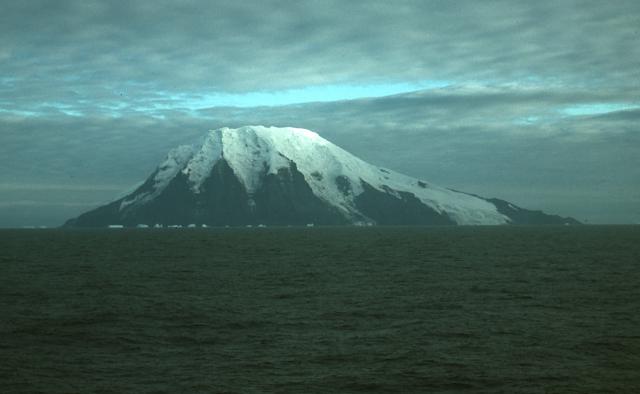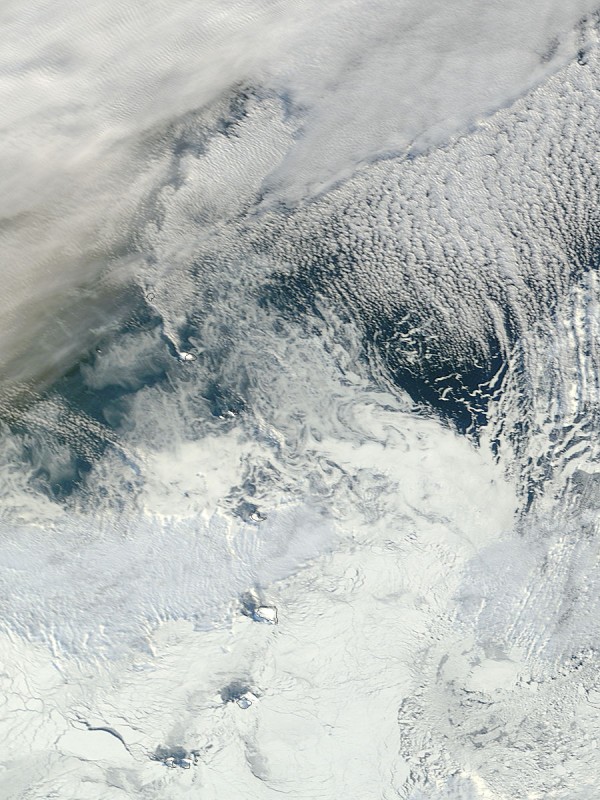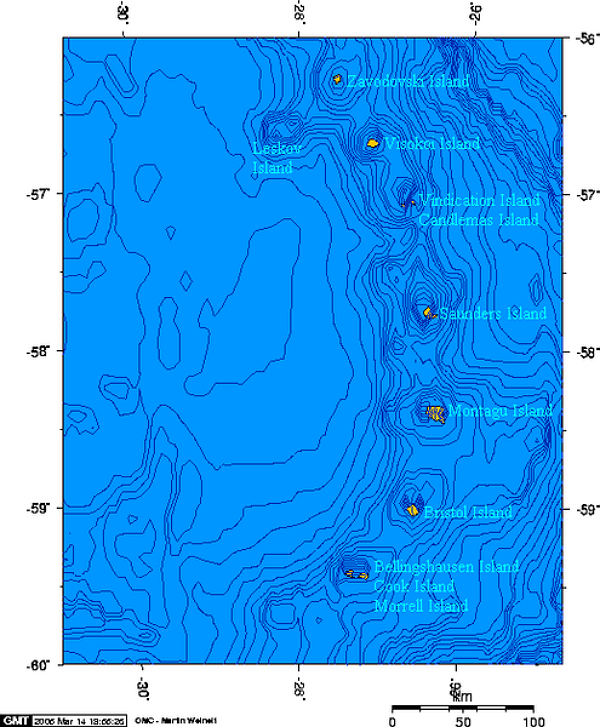Plume seen rising from Mount Hodson, Visokoi Island, South Sandwich Islands

The plume from Mount Hodson can be seen rising just to the northwest of center and curving in an arc to the northeast on latest MODIS satellite image. On August 28, 2012, a large volcanic plume rose from the Mount Hodson volcano on remote Visokoi Island, interacting with clouds overhead to create a broad rippling band easily visible from space. Gas and aerosols emitted at a low-level provided a nucleus for the formation of water droplets.
Visokoi Island is located in the northern section of the South Sandwich Island chain, 47 kilometers southeast of Zadovdski Island. Measuring about 6 km by 8 km, the island consists of a single stratovolcano with a rounded, 1005 meter high summit. Historically plumes were reported above Mount Hodson in 1830 and 1930, but the Smithsonian National Museum of Natural History’s Global Volcanism Program reports that the summit is usually obscured by “smoke” or steam.

Visokoi Island is an uninhabited island in the group of the South Sandwich Islands. Mount Hodson is a volcanic peak (1,005 m/3,297 ft) named after Sir Arnold Weinholt Hodson, a governor of the Falkland Islands. The South Sandwich Islands consist of a chain of eleven main islands that bend in an arc 240 miles (~400 km) long. The water surrounding the volcanoes has an average depth of about 8,500 feet (2,600 m). About 80% of each island is covered by glaciers.
The islands were first sighted in 1775, but the first landing didn’t occur until 1818 when seal hunters visited. The islands are administered by the United Kingdom and claimed by Argentina. The South Sandwich Islands are uninhabited and far away from commercial shipping and air routes. Because high latitude of the islands and the frequent cloudy days photographs by the Space Shuttle astronauts are rare.
List of Antarctic and sub-Antarctic islands

The South Sandwich Islands are a volcanic island arc caused by the subduction of the South American Plate beneath the South Sandwich Plate. The South Sandwich plate is one of the smallest geologic plates and is created at the South Sandwich spreading center. This small plate is less than 8 million years old and moves to the east at about 7 cm per year. The volcanic arc is younger than 5 million years. Basalt makes up at least 70% of the islands. On average, about 60% of each island is made of lava and about 40% by tephra.

Featured image credit: John Smellie (British Antarctic Survey)

Commenting rules and guidelines
We value the thoughts and opinions of our readers and welcome healthy discussions on our website. In order to maintain a respectful and positive community, we ask that all commenters follow these rules.